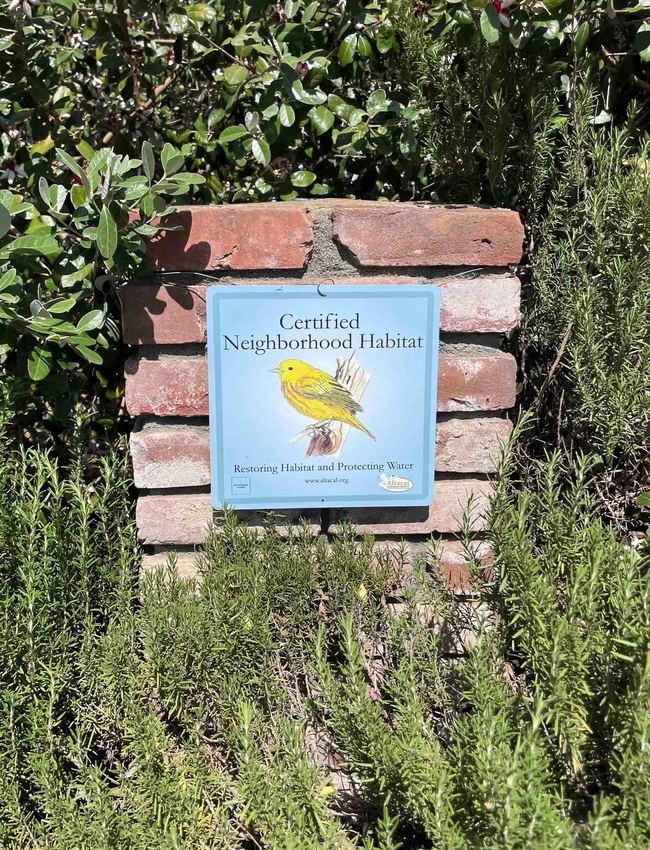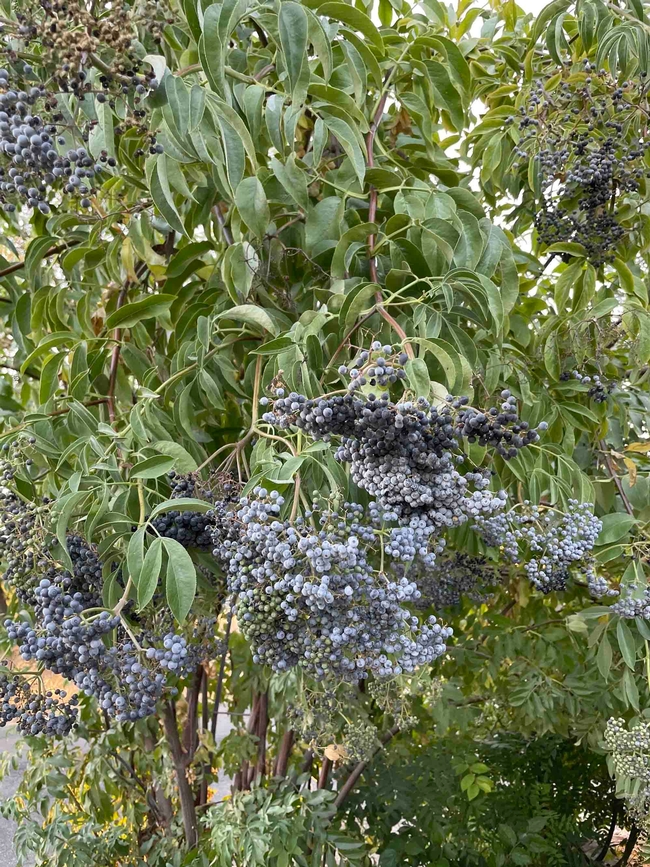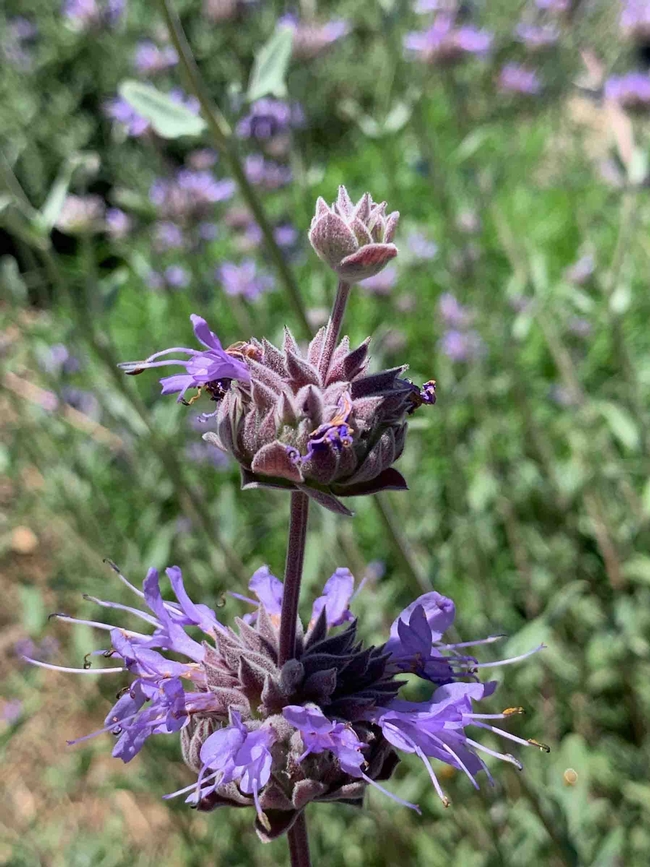We know that we are losing wildlife habitat. We know that birds and pollinators are in trouble. The good news is that our home gardens can be part of the solution, by conserving water and protecting native wildlife through Altacal Audubon's Neighborhood Habitat Certification Program. Altacal's goal is to support community members interested in converting unused lawns to natural, drought-tolerant California landscaping and habitat.

The Neighborhood Habitat Certification Program is unique to Altacal. It was designed by Altacal's leaders during the recent drought years as they sought a simple yet effective way to help the local communities reduce water usage. They drew in a host of experts who contributed to the creation of the program, including botanists, landscape designers, ornithologists, wildlife biologists, and native plant experts, as well as the UC Master Gardener Program and the Mt. Lassen Chapter of the California Native Plant Society. The Neighborhood Habitat Program received initial grant funding from the National Audubon Society and California Water Service; the City of Chico was supportive of their efforts. All parties agreed the best way to encourage residents to make lasting changes would be through an educational program.
The Neighborhood Habitat Program's water-saving strategy of landscaping with native plants also creates habitat that provides critical sustenance for birds, bees, and butterflies, a perfect match of plants and creatures evolving together over tens of thousands of years. As the Program grows in numbers and effectiveness, the local specialists who contributed to its design continue to share their experience and enthusiasm. Altacal emphasizes that the Program focuses on connecting experts, honoring Program members, and creating venues where these partners share their knowledge. The Neighborhood Habitat Program Coordinator, Carla Resnick, keeps the community connected and informed through a biannual newsletter via email. To subscribe, email her at neighborhoodhabitat.aas@gmail.com.
Below is a brief outline of the Neighborhood Habitat Certification Program and how you can qualify for the attractive Certified Neighborhood Habitat Sign announcing that you are “Restoring Habitat and Conserving Water.” Please visit www.altacal.org, or email the address listed above for more details.

The first step is to register online for a small fee. You will then receive a packet of practical information, including resource guides; plant lists; program requirements; tips on attracting, sustaining, and protecting birds; and a simple step-by-step guide to creating a Habitat Garden. Another valuable resource is the “Approaches to Creating Habitat” presentation, available on YouTube.
Step two involves identifying where you can make a change: can the entire lawn be converted to valuable and beautiful habitat? Do you need to save a bit of lawn for pets and/or children? What sort of sun exposure does your yard receive? Is your soil loamy, clayey, or somewhere in between? Take a moment to sketch a layout of your yard, including plans for hardscape, and existing vegetable / flower beds, trees, and open spots. These open spots are wonderful niches for clusters of native landscaping.
The Certified Neighborhood Habitat Program offers two levels of certification: Silver and Gold. For a Silver Certification, replace half of your front OR back yard lawn with drought-tolerant California landscaping; include a minimum of five California natives and three of the five suggested vegetation layers (see below); use low-volume irrigation methods; avoid using herbicides and pesticides; and include one of the recommended Wildlife Stewardship features (e.g. clean water source, avian nesting boxes, native grasses or wildflowers, indoor-only cats) OR Water Conservation Features (e.g. contouring with berms and swales, hydrozoning, permeable pathways, mulch, rainbarrels).
For the Gold Certification, replace all of your front OR back lawn; choose a minimum of eight natives, include all five vegetation layers in your landscape; use low water and avoid herbicides and pesticides; and install at least two of the Wildlife Stewardship and Water Conservation features.

Sheet-mulching is the best method for eradicating existing lawn. While the Master Gardeners have recommended waiting eight to ten months before planting into your ex-lawn, Altacal's quicker method involves sheet mulching around new native plantings. Either system yields the same results: habitat gardens that conserve water, offer beauty and interest, and attract and sustain bird and insect life.
To obtain formal certification, complete the self-assessment form included in the packet, then contact Altacal, which will send a representative to your home to verify your changes and deliver your certification sign. The final step is to enjoy your role as neighborhood ambassador: the real purpose of the artful blue sign with the yellow warbler is to encourage conversations about habitat and how we can all contribute to the betterment of our communities. An old saying applies here: each one, teach one – and Altacal hopes that yard conversion is contagious!
Altacal encourages us all to become wildlife stewards, water conservers, and active teachers in our neighborhoods and communities. The Certified Neighborhood Habitat Program currently has about 400 members. Over 100 of these members are completely certified, while the others are in various stages of adding habitat to their yards. There is a noticeable benefit to wildlife when there is a connected corridor to support them. Imagine the difference we could make if all the front and back yards in our neighborhoods had at least a portion of their space converted to valuable habitat -- we could create wildlife corridors through our towns. And every yard would count.
For the sheet-mulching method recommended by the UC Master Gardeners of Butte County see Sheet Compost Your Lawn Away.
UC Master Gardeners of Butte County are part of the University of California Cooperative Extension (UCCE) system. To learn more about us and our upcoming events, and for help with gardening in our area, visit our website. If you have a gardening question or problem, email the Hotline at mgbutte@ucanr.edu (preferred) or call (530) 538-7201.


